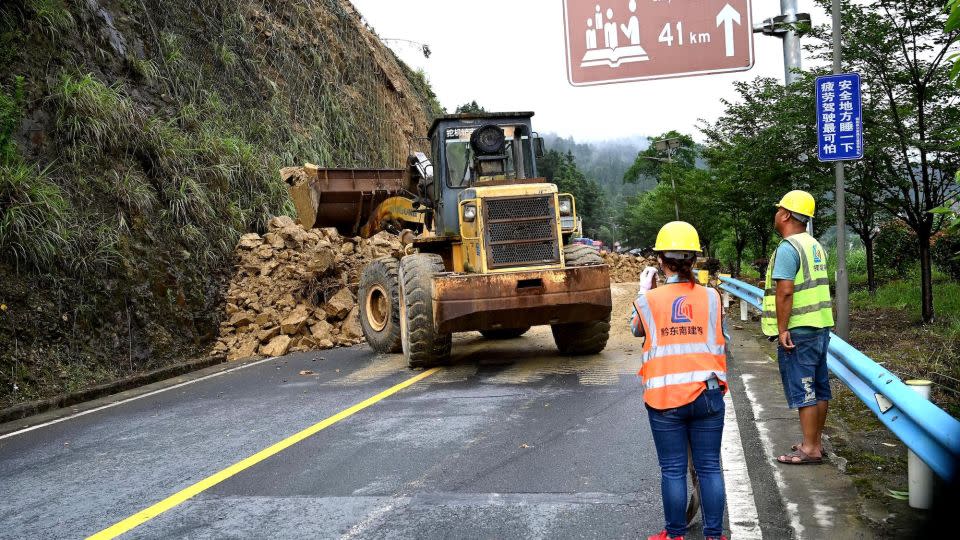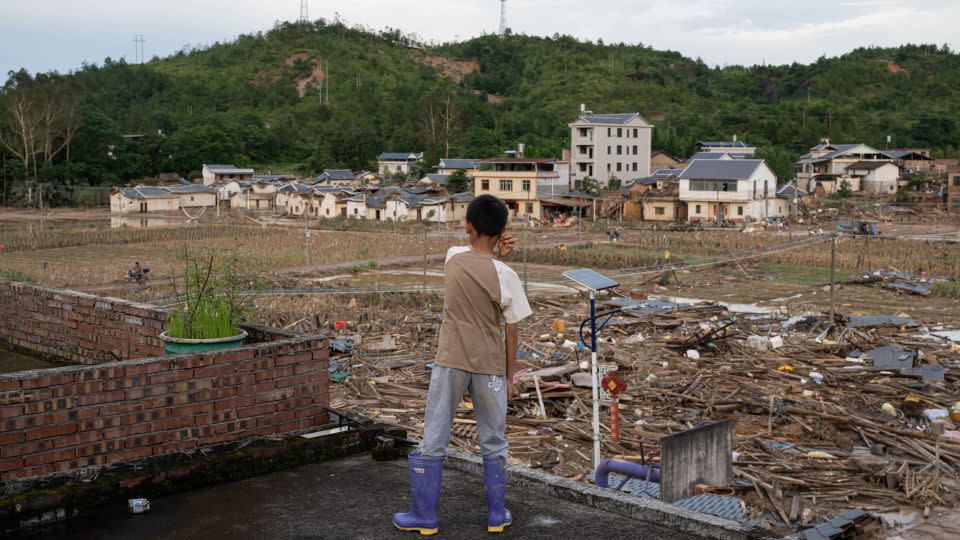China issues top rainstorm alert as deadly flooding moves north
Torrential storms that have brought widespread flooding to southeast China are moving inland, prompting the national weather service to issue its most severe rainstorm alert and warnings of further flash floods and mudslides in the coming days.
The region has been battered by heavy rainfall over the last week, causing deadly flooding and landslides that have killed at least 71 people, according to Chinese state media.
Southern Guangdong province, an economic powerhouse home to 127 million people, is subject to annual flooding from April to September. But the coastal region has faced more intense rainstorms and severe flooding in recent years as scientists warn the climate crisis will amplify extreme weather, making it deadlier and more frequent.
After displacing tens of thousands of people in Guangdong, the storms have moved slightly northward into southern central China, with footage emerging of waterlogged highways and a swamped metro system in Hunan province.

On Monday, China’s Meteorological Administration hoisted the highest red rainstorm signal for the first time this year. It warned of high risks of torrential rain in several provinces.
The high-risk area stretches from Chongqing province in the west to Zhejiang in the east, covering Hubei, Hunan and Anhui provinces.
China’s State Flood Control and Drought Relief Headquarters accelerated its flood response to level 3 (level 1 is the most urgent response) in the provinces of Zhejiang, Anhui, Jiangxi and Hunan on Monday, Chinese state media reported.

Cars floated down city streets and people waded through flooded subway tunnels Monday in Changsha, one of the hardest hit areas in the capital of Hunan province in southern central China. Local rivers rose a record 4.59 meters (15 feet), according to Chinese state broadcaster CGTN.
The state-run weather service measured 65.1 millimeters (2.5 inches) of rainfall in Changsha in a single hour – a new record for the city in June – shuttering tourist attractions and two local subway lines. Emergency crews transported residents to and from their homes in rubber boats, Reuters reported.
No deaths were immediately reported in Changsha, but fatalities have been reported across multiple provinces and cities.

Mountain torrents, which occur when heavy rainfall in a mountainous area causes sudden and extreme rushes of water, killed five people on June 21 in Yuanlin county, Hunan, CCTV reported Monday, bringing the death toll in that province to at least 13. More than 300 villagers in Taoyuan county, Hunan were also unreachable Tuesday, CCTV reported.
At least 511,000 people in 29 cities and counties in Anhui province, northeast of Hunan, have been affected by relentless rainfall and flooding and 64,000 have been forced to relocate as of Monday morning, according to CCTV.
Last week, Chinese leader Xi Jinping called for all-out efforts to safeguard lives and property, as China grapples with the heavy rains in the south and severe drought and record temperatures in the north.
Other parts of China are also facing earlier and longer extreme heat periods and droughts each year, causing widespread power shortages and disruptions to food and industrial supply chains.
CNN’s Wayne Chang and Robert Shackelford contributed to this report.
For more CNN news and newsletters create an account at CNN.com


